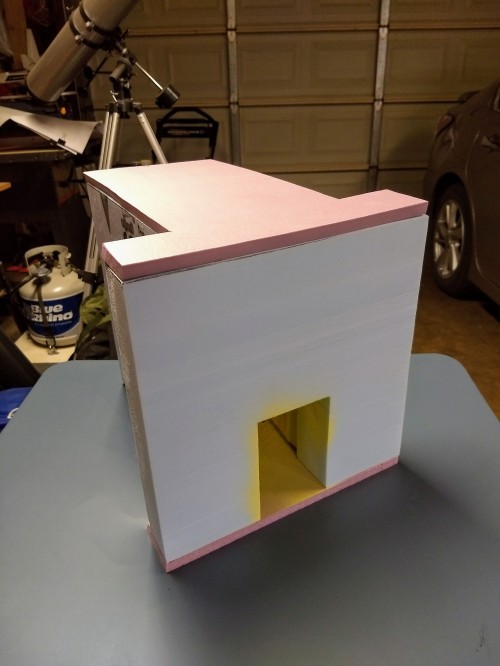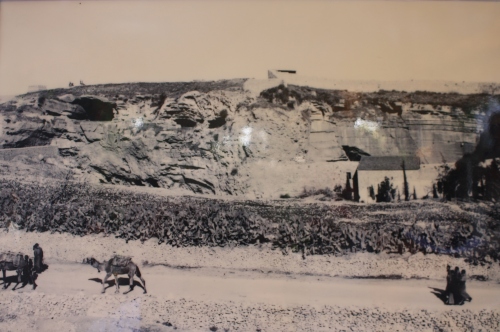
And Jesus went into the temple of God, and cast out all them that sold and bought in the temple, and overthrew the tables of the moneychangers, and the seats of them that sold doves, (Matthew 21:12)
Last week I wrote about a special assignment[1] I was given for the ICR Discovery Center for Science and Earth History. An ICR benefactor donated a Life of Christ diorama for exhibition in the Discovery Center. The set contains thousands of pieces – buildings, tents, people, animals, furnishings, etc. – fabricated mostly by an Italian company, and it often hints of Catholic influence.
One of the scenes will be of Jesus cleansing the Temple before His crucifixion. The “temple” that came with the set is patterned after Greco-Roman architecture. It in no way represents the Temple that Jesus would have known. Perhaps visitors to the Discovery Center will not notice the discrepancy, but others, like me, will see the flaw. That bothers me. We cannot allow anything to distract from the Gospel message.
Determined to correct the error, I took the dimensions of the Temple given in the Bible[2] and converted the cubits to feet and the feet to inches. Then I measured the width of the set “temple” to get the scale the footprint for the model I would build of the Temple. As it turned out, a scale model would be 58 inches tall and would probably cause a greater distraction than the building that came with the diorama. So, I scrapped my idea and resolved to use the incorrect building that came with the set.
When I told Henry, (the MIC) of my decision, he encouraged me to follow through with my idea. He reminded me that the Temple model did not need to be an exact scale; it just needs to “look” like the Temple of Jesus’ day. Pictured above is the beginning of what will be the Temple model. To see the completed model, you will need to visit the ICR Discovery Center for Science and Earth History when it opens this September (2019).
Jewish religious life revolved around the Temple and Jesus, being an observant Jew, followed all the laws regarding it. When He was just eight days old, His earthly parents presented Him along with the required sacrifice to the priests at the Temple.[3] He had His bar mitzvah in the Temple at the age of 12,[4] and as Scripture points out, He went to the Temple each year for the Passover.
In His final week of life, He exercised the practice of ridding His house of “leaven” in preparation for the Passover by cleansing the Temple of the illegal trade that took place there. “And [He] said unto them, It is written, My house shall be called the house of prayer; but ye have made it a den of thieves. (Matthew 21:13, emphasis mine). The Temple was His house.
The Temple bears the shape of a cross. At the foot of the cross is the altar where the sacrifices are burned. Jesus gave His life as our eternal sacrifice. Beyond the altar resides the laver or mikvah where the priests would wash before entering the Temple. Jesus is the “living water” that cleanses us from all sin.[5] The Temple has only one door through which the priests can enter. Jesus said, “I am the door: by me if any man enter in, he shall be saved, and shall go in and out, and find pasture” (John 10:9, emphasis mine). Jesus saith unto him, I am the way, the truth, and the life: no man cometh unto the Father, but by me” (John 14:6, emphasis mine). As one enters through the door of the Temple, on the left stands a seven-branch menorah. Jesus said, “I am the light of the world: he that followeth me shall not walk in darkness, but shall have the light of life” (John 8:12, emphasis mine). On the right is the table of the “showbread.” Jesus said, “I am the bread of life: he that cometh to me shall never hunger; and he that believeth on me shall never thirst,” (John 6:13, emphasis mine). Directly ahead stands the altar of incense which represents the prayers of the people going up to God. Jesus said, “And whatsoever ye shall ask in my name, that will I do, that the Father may be glorified in the Son” (John 14:13).
Beyond the altar of incense rises a heavy curtain from floor to ceiling that separates this holy place from the Holy of Holies where the very presence of God resides. Inside that sanctum resided the Ark of the Covenant, covered by the Mercy Seat upon which the sacrificial blood was spilled on behalf of all the people. This place was so holy that only the high priest could enter and then only once a year on the Day of Atonement,[6] Yom Kippur. When Jesus died on the cross, He carried His own blood into the heavenly Holy of Holies spilling it on God’s mercy seat. “And, behold, the veil [the curtain] of the temple was rent in twain from the top to the bottom; and the earth did quake, and the rocks rent” (Matthew 27:51, emphasis mine), and the way into the presence of God was opened for us.
Today every true believer is the Temple of God[7] because we have His presence within us.[8] The model temple I am building is a simple replica of the one that used to be. But the real Temple is me and anyone else who has invited the Lord to save them and take up residence within. I want to build an excellent model for visitors to the Discovery Center to enjoy, but even more important is the maintenance of the Temple in which God now resides.
If what I am saying sounds strange, visit my page on Securing Eternal Life.
Notes:
[1] “On a Hill Far Away” – https://erniecarrasco.com/2019/05/12/on-a-hill-far-away/
[6] “Rosh HaShanah” – https://erniecarrasco.com/2016/10/03/rosh-hashanah/
[7] Living Temples – https://erniecarrasco.com/2018/03/18/living-temples/


